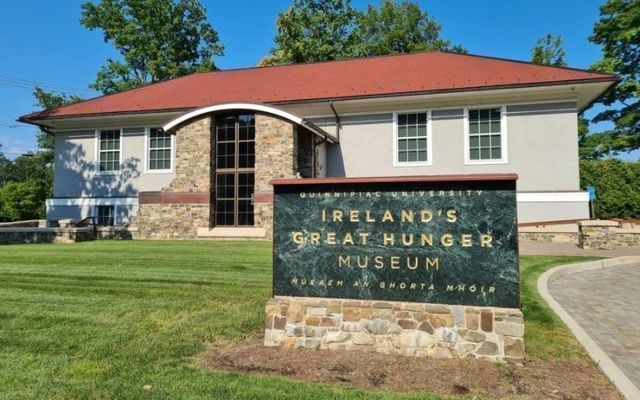The Office of the Attorney General in Connecticut will monitor the transfer of the contents of Quinnipiac University’s Great Hunger Museum to a new entity, Ireland’s Great Hunger Museum of Fairfield, through an equitable deviation action, a legal process allowing for changes to the administration of a charitable trust.
In March, the board of trustees of Quinnipiac voted unanimously to permanently transfer the contents of the Great Hunger Museum, which has been closed since the start of the pandemic, to the Gaelic American Club of Fairfield. Not long after, a new charitable entity, Ireland’s Great Hunger Museum of Fairfield, was formed to administer the transfer and secure a new building for the museum’s contents.
The attorney general’s office had been investigating Quinnipiac’s decision to divest itself of the museum, which contains the world’s largest collection of artwork dedicated to the Irish Famine. Several of the pieces in the museum were donated, which prompted the attorney general’s office to get involved.
“Based on the materials provided to the OAG (office of the attorney general) and the conversations we’ve had with the many parties interested in preserving the Collection, we believe an equitable deviation action will be necessary to transfer those charitable gift assets that are connected to the IGHM (Ireland’s Great Hunger Museum),” a letter to Quinnipiac’s attorneys dated August 16 and signed by Connecticut Assistant Attorney General Gary W. Hawes said.
“We understand that the University has selected the Fairfield Museum as the intended recipient of the Collection and that the Fairfield Museum, as a newly formed organization, has various tasks to complete prior to a transfer of the Collection, including securing both the property at 636 Old Post Road as the location to house the Collection and the funding to support all needed aspects of acquiring the Collection and running a museum.
“Because the equitable deviation action will remain a future prospect until the Fairfield Museum is ready to accept the Collection, the OAG will follow the progress of the Fairfield Museum until that time. In the meantime, the OAG expects that the University will protect and preserve the Collection. In addition, the OAG hopes that the University will endeavor to find opportunities to loan out portions of the Collection for exhibits that support the IGHM’s mission.”
Ireland’s Great Hunger Bord, an organization recently formed that sprung from the Save Ireland’s Great Hunger Museum group which had hoped to take over the administration of the museum at its current location on the Quinnipiac campus, applauded the letter from the attorney general’s office.
“The attorney general’s statement regarding the future disposition of the art collection provides hope that it will remain intact in the future,” a statement from the Bord said.
“We deeply appreciate that the AG’s office will assume oversight responsibilities for ensuring the preservation of the collection,” said Bord chair Turlough McConnell. “We also reiterate to Quinnipiac University trustees our willingness to help care for and display portions of the collection until such time as another entity can meet the requirements now posed by the attorney general and, ultimately, the courts,” McConnell added.
“The most concerning aspect of the rendered letter is that the collection remains closed to any public scrutiny. Ireland’s Great Hunger Bord fears that the collection, not seen for more than two years, may be in storage that doesn’t meet museum standards for conservation and protection from mold, mildew, and the ravages of heat and light. An independent third-party inspection of the entire collection by a qualified conservator or registrar would assuage such concerns.”

Love Irish history? Share your favorite stories with other history buffs in the IrishCentral History Facebook group.




Comments